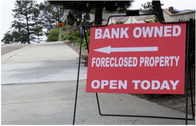
REO inventories at the top GSEs shrunk in the third quarter, but there may be more to the data than meets the eye.
Fannie Mae and Freddie Mac released earnings and inventory statistics a couple days ago, and the data suggested a substantial decline in REO properties for the GSEs.
Counting FHA properties, the GSE’s REO inventories decreased to 226,961 at the end of the third quarter, down from the 249,501 units that were on the organization’s books in the second quarter. Year-over-year, the third quarter numbers are a 23 percent decline.
Some analysts, however, are accepting the data with caution. Bill McBride, for instance, writer of the financial blog Calculated Risk, wrote that the data is more reflective of fewer acquisitions of REO properties because of slowdowns in the foreclosure process, not because sales are necessarily higher.
Once that slowdown, which has resulted from 2010’s robo signing scandals, concludes, REO properties may return to their previous highs, McBride wrote.
“The REO inventory for the “Fs” increased sharply in 2010, but may have peaked in Q4 2010,” McBride wrote. “However, there may be a new peak when the foreclosure dam eventually breaks.”
Also worth considering, wrote HousingWire’s Jon Prior, is the rate that GSEs are unloading their REO properties. At the current pace that Freddie Mac is selling its properties, for instance, 15 years would have to pass before its inventories would be completely clear, such is the proximity between sales and the constantly expanding inventory of new REOs.
Prior wrote, “Rick Sharga, the executive vice president at Carrington Mortgage Holdings, said the problem is actually worse than the story told by the raw data. Since 2005, there’s only been one quarter when the market sold more REO than lenders took in. That occurred in 2009, he said.”
Though this may seem like bad news, McBride did have some optimism, speculating that government action on REOs could lessen the impact of freshly distressed properties.
“I expect quite a few modifications as part of the settlement, and probably a bulk REO selling program from Fannie and Freddie,” McBride wrote.